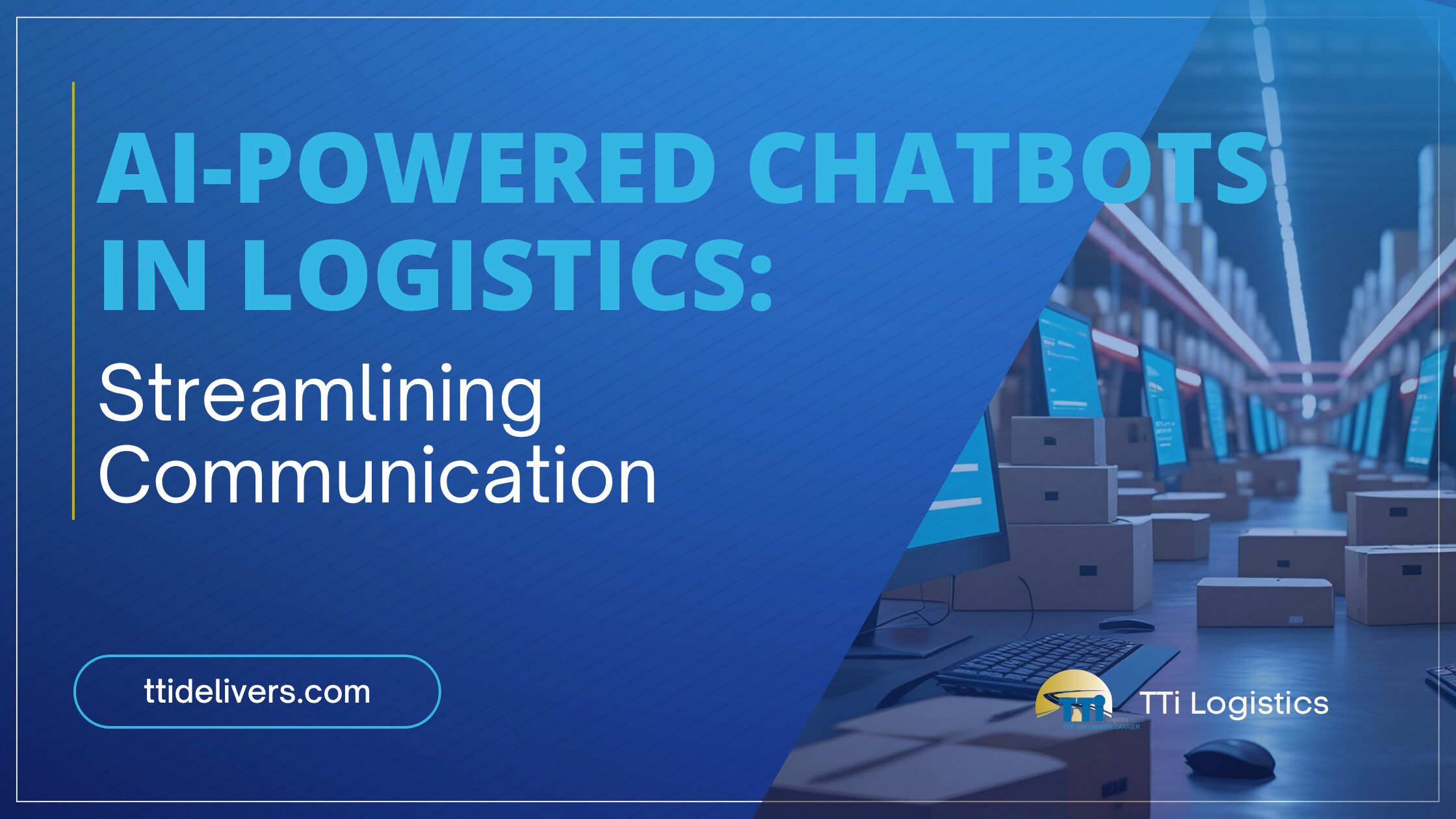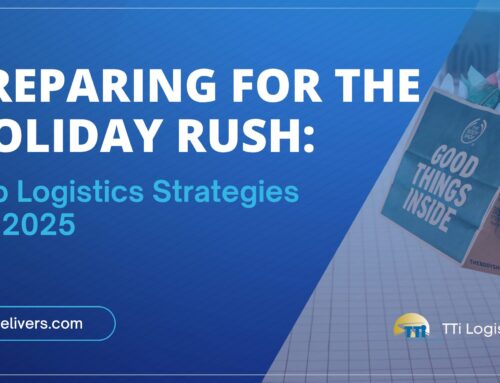Why Communication is the Backbone of Modern Logistics
Planning for a trade show logistics is a significant undertaking, and budgeting for trade shows is one of the most critical aspects of this process. A well-planned budget ensures that you maximize your investment and avoid unexpected costs, enabling you to focus on building connections and showcasing your business. As we look ahead to 2025, trade show budgeting strategies are evolving, with new considerations and opportunities for cost savings and efficiency.
In this blog, we’ll explore the key considerations for exhibitors when budgeting for a trade show in 2025, from pre-show planning to post-event follow-up. With over 25 years of experience in the trade show shipping industry, TTi Logistics has become the go-to partner for exhibitors, offering reliable solutions to streamline the entire process. Whether you’re a seasoned exhibitor or attending your first show, these insights will help ensure your trade show budget is well-structured and strategically allocated.
Communication: The Backbone of a Resilient Supply Chain
In logistics, timing is everything—and timing depends on communication. When shippers, carriers, warehouse managers, and customers are all exchanging real-time information, operations run smoother and disruptions are resolved faster.
But traditional communication methods—emails, phone calls, and manual data entry—aren’t fast enough for today’s supply chain complexity. That’s where AI chatbots in logistics come in.
These intelligent, automated tools are transforming how information flows across the supply chain, helping teams respond to inquiries, resolve issues, and deliver updates without manual intervention. At TTi Logistics, we see AI-powered chatbots as essential tools for creating more agile, responsive, and scalable logistics operations.
What Are AI Chatbots?
AI chatbots are software programs that use artificial intelligence to simulate human conversation. In logistics, they’re often integrated into websites, portals, mobile apps, or internal systems to:
- Answer customer questions
- Update clients on shipment status
- Alert teams to delays or disruptions
- Assist employees with internal process queries
- Automate repetitive communication tasks
These bots use natural language processing (NLP) and machine learning to understand context, improve over time, and offer intelligent responses—24/7, without needing a human operator.
Why Chatbots Are a Game-Changer in Logistics
Logistics is full of questions: “Where is my shipment?” “Has the truck left the facility?” “What’s the ETA on delivery?” “Can I change my address?” These inquiries come from customers, warehouse staff, transportation teams, and more—often at the same time.
AI chatbots help logistics companies:
- Reduce response times from hours to seconds
- Minimize manual work for customer service and operations staff
- Provide consistent and accurate answers at scale
- Keep clients informed without overloading human teams
Key Advantages of AI Chatbots in Logistics
- 24/7 Availability: No matter the time zone or business hours, chatbots can respond instantly.
- Multilingual Capabilities: Chatbots can communicate in multiple languages—ideal for global supply chains.
- Scalability: Handle hundreds or thousands of conversations simultaneously without added headcount.
- Integration: Seamlessly connect with TMS, WMS, CRM, or tracking systems to deliver real-time answers.
- Cost Efficiency: Reduce the need for large customer support teams, especially for routine queries.
Use Cases of AI Chatbots Across the Logistics Workflow
AI chatbots aren’t just for customer support—they can touch nearly every corner of a logistics operation. Here are some of the top applications:
1. Customer Service and Shipment Tracking
The most common use case is customer-facing chatbots that:
- Provide real-time tracking info
- Handle delivery update requests
- Process address changes or order edits
- Answer FAQs about shipping policies
TTi Logistics uses chatbot integrations to help clients deliver a fast, self-service experience for their customers.
2. Internal Operations Support
Chatbots can assist warehouse teams and dispatchers by:
- Providing quick access to SOPs or process documentation
- Answering scheduling or equipment usage questions
- Alerting managers to unusual activity, like inventory mismatches or delays
This reduces time spent digging through manuals or contacting supervisors.
3. Carrier Communication
Instead of relying on emails or phone calls, AI chatbots can:
- Confirm driver assignments
- Send reminders for pickups or deliveries
- Alert drivers to route changes or congestion
- Collect proof of delivery via mobile chat
4. Onboarding and Training
New hires in warehouse or dispatch roles can ask chatbots basic questions during training—like how to enter an order, request a vehicle, or print labels. It creates a faster ramp-up time and eases the burden on supervisors.
5. Exception Handling
When delays, damage, or missed pickups occur, chatbots can:
- Automatically notify relevant stakeholders
- Provide options for rescheduling or rebooking
- Escalate the issue to the right team member with full context
How TTi Logistics Implements Chatbot Technology
At TTi Logistics, we build AI chatbot functionality into our client portals and internal systems where it makes the biggest impact. We focus on creating chatbots that are:
- Context-aware: Pulling relevant data from order records, shipment tracking, and account info
- Conversational: Capable of understanding informal language and follow-up questions
- Secure: Built with authentication and data protection in mind
- Flexible: Able to escalate to human reps when needed
We view AI chatbots as an extension of our team—augmenting human support, not replacing it.
Best Practices for Deploying AI Chatbots in Logistics
Adopting chatbot technology in a logistics environment requires more than just plugging in a script. To get real results, you need thoughtful design, seamless integrations, and clear expectations. Key practices include:
- Identify high-volume, repetitive tasks for automation
- Integrate with TMS, WMS, and CRM tools for live data
- Maintain a human handoff path for complex issues
- Train and refine the bot regularly
- Focus on the user experience so chatbots feel like helpful assistants
The Future of AI Chatbots in Logistics
Chatbots are evolving from simple support tools into powerful operational teammates. Expect:
- Conversational AI that learns your business rules and customer profiles
- Voice-based interfaces for hands-free communication
- Predictive assistance to anticipate needs and delays
- Global supply chain coordination with multilingual bots
- Integration with Robotic Process Automation (RPA) to automate backend actions
AI Chatbots for Trade Show Logistics
Every detail matters when preparing for a trade show. AI chatbots streamline your trade show logistics, from shipment tracking to real-time issue resolution, so you can focus on presenting your business and connecting with attendees.
Ready to Upgrade Your Supply Chain Communication?
In the fast-paced world of logistics, every second and every message matters. AI chatbots give your team the power to respond instantly, scale communication effortlessly, and keep both internal teams and customers informed—without adding extra manual work.
At TTi Logistics, we combine human expertise with AI technology to deliver a modern, responsive logistics experience. From order tracking to issue resolution, our chatbots streamline operations across the board—so you can focus on growing your business and making your next event a success.







